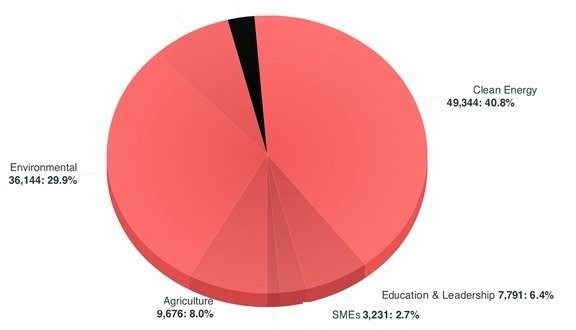
Social Media in Latin America and the Caribbean Private Sector
If you’re curious if and how the Latin America and the Caribbean private sector uses social media, this post is for you.
My firm just completed a comprehensive study for the IDB Group on private sector discussions on social media among local companies, financial markets, multilatinas and peer multilaterals in Latin America and the Caribbean.[1]
This post features a summary of our findings. Let’s get into to the data.
Latin American Businesses are Social
Latin American Internet users are more engaged on social media than US users, according to comScore. Half of the 10 countries with the most hours spent on social networks per month are Latin American, namely Argentina, Brazil, Chile, Colombia and Peru.
The most popular social networking brand in Latin America is Facebook, hosting 21 million more Latin America profiles than US profiles. In 2010, 45% of Latin American companies were active on at least one social media platform. By 2012, that number rose to 65% of Latin American companies active on at least one social networking platform.
Argentine is the world’s most engaged global population on Twitter. Brazil and Mexico are among the top 10 most engaged countries on Twitter. And Brazil is the world’s second most engaged population on Facebook, according to Spark Groupresearch. The majority of business-oriented discussions on social networking in Brazil are actually in Spanish rather than Portuguese.
Specific Internet usage patterns among Latin American countries are more distinctively described as follows, according toTendencias Digitales.
1. In Guatemala, El Salvador, Panama, Peru, Costa Rica and Ecuador, people tend to use the Internet mostly for information gathering and social networking.
2. In Uruguay, Venezuela and Argentina, they tend to use the Internet transactionally, for online banking, ecommerce and online auctions.
3. In the Dominican Republic and Colombia, the primary use is multimedia and entertainment consumption.
4. And in Mexico and Chile, the use of social media for individual expression through blogging and podcasting is popular, which holds true for business customers as well, out study confirmed.
Overall Internet and social media penetration rates in the Caribbean are considerably lower, but those numbers are rising. The Dominican Republic, which has the highest Internet penetration rate of the Spanish-speaking Caribbean countries, also has the highest export rate.
Of all the topics we monitored, we found across all media types that clean energy was the most discussed topic in Latin America and the Caribbean, with the majority of those conversations occurring in Brazil and Mexico.
The second most popular topic was environmental issues, the third was agriculture and the fourth was education and leadership.
The majority of items we collected were tweets (73%), followed by blog posts (18%) and Facebook status updates (4%). But since most Facebook members restrict access to their profiles to their “Friends” or “Friends of Friends,” we did not consider the Facebook percentage to be an accurate representation of the share of all conversations occurring there.
Of the Facebook status updates, we did collect, most were from Brazil and Mexico, followed by Colombia and Argentina. The top three topics of conversation held true to the norm, but interestingly enough, on Facebook posts about anti-corruption eclipsed agriculture for third place, suggesting that Latin Americans are using Facebook as a sort of whistle blowing platform for exposing the wrong doings of business and government leaders.
Twitter usage was most predominant in Brazil (28%), followed by Mexico (17%), Venezuela (15%), Colombia (12%), Chile (8%), Argentina (7%) and Peru (3%). While per capita usage may be highest in Argentina, the platform does not appear to be as popular among business users, as it is among casual users. But when it comes to business-orientated conversations, Argentinean Twitter users tweet mostly about clean energy (49%), environmental issues (28%) and agricultural development (5%).
Sixty-four percent of the blog posts we collected were in Spanish, 12% were in Portuguese and the remaining 24% were in English. The most popular topics Latin Americans blog about are clean energy (34%), education and leadership (24%), agriculture (23%) and environmental issues (9%).
While social media is just one component of a digital strategy, healthy conversations are well underway about sustainable business development in Latin America and the Caribbean.
Latin Americans don’t just check the news, weather, sports and family events online. They discuss business too. So if you’re in the private sector in the region, look for opportunities to find and insert yourself into conversations on social networks at the right time to establish yourself as a trusted resource, develop your new business pipeline and ultimately, steer purchasing decisions
Digital access is fast becoming a global consumer expectation. Fifty-one percent of Latin American consumers say the quality of Internet banking services influenced their decision when choosing a retail bank, according to Capgemini’s 2014 World Retail Banking Report.
Now is the time to use digital technology to make it easier for customers to do business with you. If you’re just getting started, focus on developing your digital communications job skills through social media training. The first step is achieving digital literacy.
The data is in. Businesses in Latin America and the Caribbean are investing in social media. It is no longer a question of “Will social media affect my business?” The question now is, “How do you get in the game?”
[1] We conducted primary research on relevant discussions by monitoring blogs, public Facebook accounts, forums, MySpace and Twitter, as well as the captions of images on Flickr and video posts on YouTube in Spanish, Portuguese and English. We also assembled tertiary research from reputable sources on penetration rates and usage patterns. And we used geo data to confine our study geographically to posts emanating from or hosted on servers in the region.
This guest post was published first in the Inter-American Development Bank Sustainable Business Blog.

Great study!